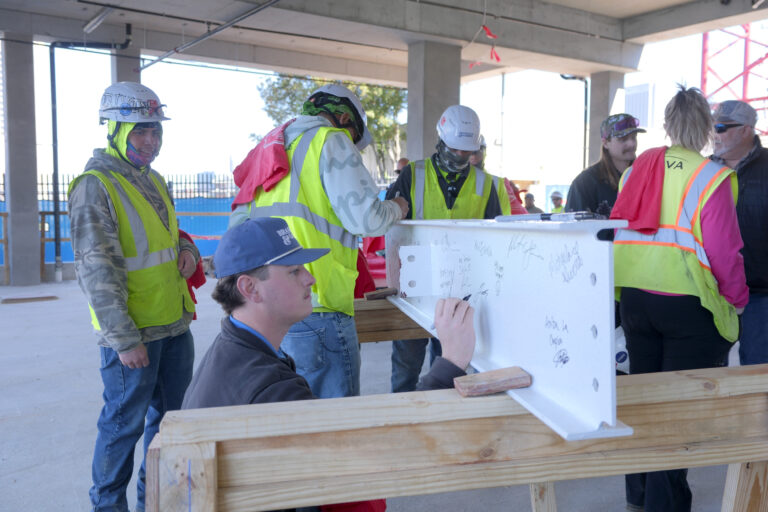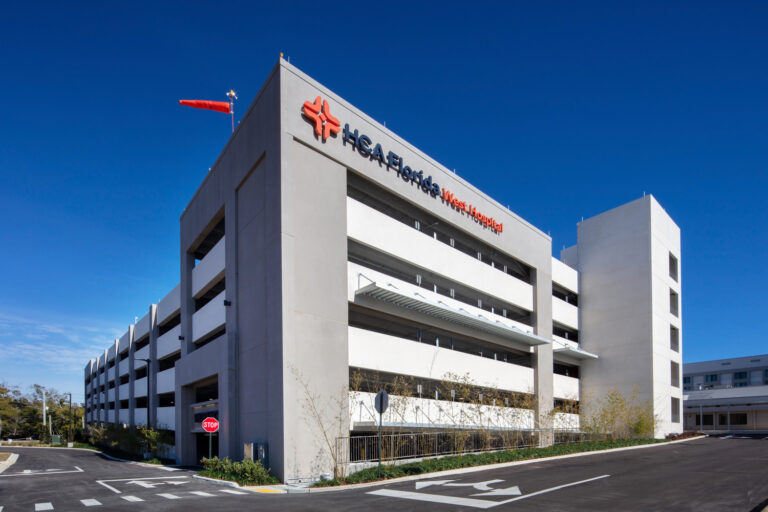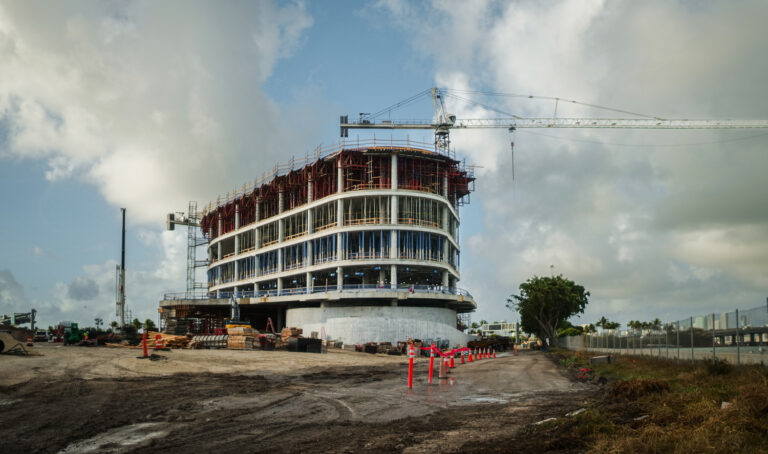- Healthcare
- Industrial
- Multifamily
4D scheduling? It’s the next big thing
November 18, 2022
Construction schedules can be as complex as the projects they represent. At Brasfield & Gorrie, we’re accustomed to navigating that intricacy, but we’re also passionate about continuous improvement. Our recent efforts have illustrated the value of 4D schedules, which tie 3D models to a project’s schedule, animating tasks to visually communicate a project’s progress.
4D schedules offer several benefits:
- Visual validation of the overall project schedule
- A better understanding of construction sequencing
- An in-depth understanding of how construction will be executed in the future
- Aid in auditing and coordinating site logistics and safety procedures
- A tool to confirm the plan, refine the plan, or review previous plans
A common misconception is that the structural phase of construction is the only beneficial time to utilize 4D scheduling. Recent pilots have proved otherwise.
“Using the 4D animation was extremely helpful for our team as we thought through our skin sequencing plan,” said Sydna Lowe, a project manager for 760 Ralph McGill Parcel C in Atlanta.
Other recent projects that piloted 4D scheduling include the TK Elevator Test Tower and Innovation Qualification Center in Atlanta, a confidential manufacturing facility, and the Next Medical West Replacement Hospital in Birmingham, Alabama.
Historically, we have successfully used 4D animations in project pursuits but have not continued the use of 4D scheduling during operational phases of our projects. This is primarily due to the time and effort that was required to produce an accurate 4D model.
VDC and scheduling team members have increased the efficiency of building a 4D model by automating the processes to link a P6 schedule to a Revit model. When combined with building information modeling and scheduling standards that allow consistent integration, 4D modeling can be a less manually intensive process for communicating the schedule to the entire project team.
“The ability to quickly sync the P6 schedule with the BIM model is essential to making 4D modeling a valuable and timely tool for our project teams,” said Zach Rodgers, a VDC manager in Orlando.
4D scheduling can improve the safety, predictability, quality, and execution of complex construction projects. It also has the potential to save money and reduce project risk by avoiding rework and identifying schedule problems well in advance. Most importantly, it can solve one of our most difficult challenges: communicating a complex project schedule plan in a simple manner.
“The 4D model makes communication more efficient for those who have trouble reading the paper schedule,” said Heath Collins, superintendent on a confidential manufacturing project. “We have used the 4D model on an almost-daily basis for reference and planning, and it has been like a lightbulb going off for some of our trade contractors.”
The 4D process also helps clients understand the construction process. This can promote better conversations before and during construction, which improves the project for all involved.
“The 4D model has been an effective communication tool between the Brasfield & Gorrie team and owner,” said Anthony Jelercic, senior planner/scheduler on a confidential manufacturing project. “Part of the complexity of this project involves setting owner-procured equipment as we construct two process towers. The 4D animations showing the equipment being placed within the concrete and steel structure are reviewed during owner-architect-contractor and coordination meetings for all parties to gain a visual understanding of the sequence of work.”
Related


